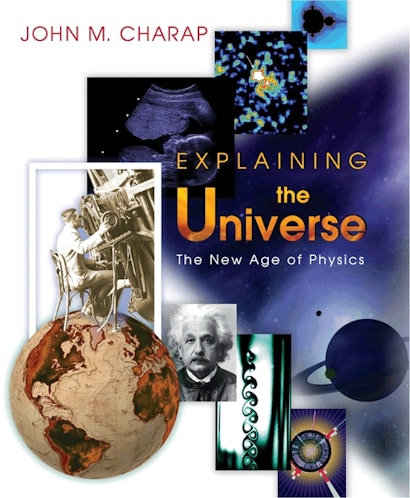Explaining the Universe: The New Age of Physics


Paperback
ebook
- Sale Price:
- $33.60/£28.00
- Price:
-
$48.00/£40.00 - ISBN:
- Published:
- Jun 5, 2018
- Copyright:
- 2002
- Main_subject:
- Physics & Astronomy
30% off with code PUP30
In this fascinating book, John Charap offers a panoramic view of the physicist’s world as the twenty-first century opens—a view that is entirely different from the one that greeted the twentieth century. We have learned that the universe is billions of galaxies larger than we imagined—and billions of years older. We know more about how it came to be and what it is. Because of physics, we live in a world of greater danger and more convenience, smaller particles and bigger ideas.
Charap introduces these ideas but spares us the math behind them. After a review of the twentieth century’s thorough transformation of physics, he checks in on the latest findings from particle physics, astrophysics, chaos theory, and cosmology. His tour includes ongoing efforts to find the universe’s missing matter and to account for the first moments after the big bang. Taking readers right to the field’s speculative edge, he explains how superstring theory may finally unite quantum mechanics with general relativity to produce a consistent quantum theory of gravity.
Along the way, Charap poses the questions that continue to inspire research. Why is the universe flat? Why can’t we forecast weather better? Can Schrodinger’s cat really be simultaneously dead and alive? Why does fractal geometry keep showing up in strange places? Might spacetime have eleven dimensions? What does quantum mechanics mean about the nature of our world?
In this book’s pages, the nonphysicist will accept as commonsensical Heisenberg’s uncertainty principle, and physicists can meet across specialties. Students can access physics’ critical concepts, and poets can learn a new language to describe the universe’s many wonders. Taking us from the ultraviolet catastrophe that undid the Newtonian world to tomorrow’s Theory of Everything, Charap brings today’s most fascinating science down to Earth, where we can all enjoy it.